| Date | Text | |
|---|---|---|
30 Nov 1932
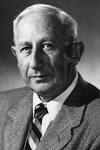
Walter Baade |
Walter Baade (astronomy) Walter Baade and Fritz Zwicky invent the concept of the neutron star, a new type of celestial object, suggesting that supernovae might be created by the collapse of a normal star to form a neutron star. |
|
30 Nov 1932
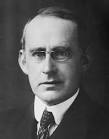
Arthur Eddington |
Arthur Eddington (astronomy) Sir Arthur Eddington publishes The Expanding Universe: Astronomy's 'Great Debate', 1900–1931 in Cambridge. |
|
30 Nov 1932

Gilbert N. Lewis |
Gilbert N. Lewis (chemistry) Gilbert N. Lewis isolates the first sample of pure heavy water by electrolysis. |
|
30 Nov 1932

Andrey Kolmogorov |
Andrey Kolmogorov (mathematics) Andrey Kolmogorov publishes Foundations of the Theory of Probability, laying the modern axiomatic foundations of probability theory. |
|
30 Nov 1932

David Champernowne |
David Champernowne (mathematics) David Champernowne, while still a Cambridge undergraduate, publishes his work on the Champernowne constant in real numbers. |
|
30 Nov 1932
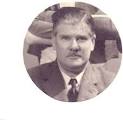
Stanley Skewes |
Stanley Skewes (mathematics) Stanley Skewes discovers Skewes' number. |
|
30 Nov 1932

Manfred Sakel |
Manfred Sakel (medicine) Manfred Sakel begins to practice insulin shock therapy on psychiatric patients in Vienna. |
|
30 Nov 1932

Museum of Science and Industry (Chicago) |
Museum of Science and Industry (Chicago) (organizations) Museum of Science and Industry (Chicago) first opens to the public, as part of the Century of Progress Exposition. |
|
30 Nov 1932

Institute for Advanced Study |
Institute for Advanced Study (organizations) The Institute for Advanced Study opens at Princeton, New Jersey, attracting Albert Einstein, John von Neumann and Kurt Gödel. |
|
06 Jan 1933
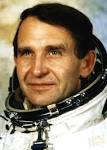
Oleg Makarov |
birth Oleg Makarov Oleg Makarov (died 2003), Soviet cosmonaut. |
|
09 Mar 1933

David Weatherall |
birth David Weatherall David Weatherall, English molecular geneticist. |
|
10 Mar 1933
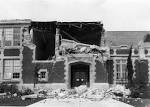
Long Beach earthquake |
Long Beach earthquake (earth sciences) Long Beach earthquake in Southern California: First recording of earthquake strong ground motions by an accelerograph network, installed in 1932 by the United States Coast and Geodetic Survey. |
|
10 Mar 1933

Patricia Bergquist |
birth Patricia Bergquist Patricia Bergquist (died 2009), New Zealand scientist who specialized in anatomy and taxonomy. |
|
13 Mar 1933
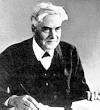
Robert Innes |
death Robert Innes Died 13 Mar 1933 at age 71 (born 10 Nov 1861). Robert Thorburn Ayton Innes was a Scottish astronomer who discovered Proxima Centauri (1915), the closest star to earth after the Sun. Invited by David Gill to the Cape Observatory, South Africa (1894), he became a successful binary star observer with the 7-inch refractor (1628 discoveries). His most famous discovery, Proxima Centauri is a faint star near the binary star Alpha Centauri, which is so far south it is not visible from most of the northern hemisphere. He was also the first to see the Daylight Comet of 1910, though this comet was found independently by so many people in the Southern Hemisphere that no single "original'' discoverer could be named. Innes recorded it on 17 Jan 1910. |
|
23 Mar 1933

Philip Zimbardo |
birth Philip Zimbardo Philip Zimbardo, American social psychologist. |
|
31 Mar 1933
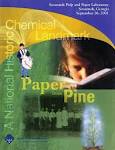
Pine-pulp newspaper |
Pine-pulp newspaper In 1933, the first newspaper in the U.S. to be printed on pine-pulp paper was at Soberton, Georgia. |
|
03 May 1933

Steven Weinberg |
birth Steven Weinberg Born 3 May 1933. American nuclear physicist who shared the 1979 Nobel Prize for Physics (with Sheldon Lee Glashow and Abdus Salam) for work in formulating the electroweak theory, which explains the unity of electromagnetism with the weak nuclear force. |
|
01 Jun 1933

RCA |
RCA (technology) A research group at RCA headed by Vladimir K. Zworykin publicly launches the iconoscope, the first practical cathode ray tube television camera. |
|
14 Jul 1933

Law for the Prevention of Hereditarily Diseased Offspring |
Law for the Prevention of Hereditarily Diseased Offspring (medicine) Law for the Prevention of Hereditarily Diseased Offspring enacted in Nazi Germany allowing compulsory sterilization of citizens suffering from a list of alleged genetic disorders. |
|
15 Aug 1933

Stanley Milgram |
birth Stanley Milgram Stanley Milgram (died 1984), American social psychologist. |
|
10 Sep 1933
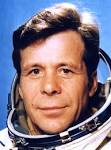
Yevgeny Khrunov |
birth Yevgeny Khrunov Yevgeny Khrunov (died 2000), Soviet cosmonaut. |
|
12 Sep 1933
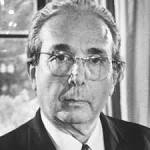
Leó Szilárd |
Leó Szilárd (physics) Leó Szilárd, waiting for a red light on Southampton Row in Bloomsbury (London), conceives the idea of the nuclear chain reaction. |
|
25 Sep 1933

Paul Ehrenfest |
death Paul Ehrenfest Paul Ehrenfest (born 1880), Austrian physicist and mathematician. |
|
13 Oct 1933
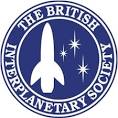
British Interplanetary Society |
British Interplanetary Society (astronomy) The British Interplanetary Society is founded. |
|
29 Oct 1933
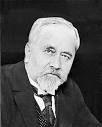
Albert Calmette |
death Albert Calmette Died 29 Oct 1933 at age 70 (born 12 Jul 1863). French physician and bacteriologist who was a pupil of Louis Pasteur. He joined the Navy as a doctor, and was the Director of the Bacteriological Institute of Saigon (1891). On his return in France, as a professor of bacteriology, he created the Pasteur Institute of Lille. (1895-1919). Calmette studied the venoms of the snakes and anti-venomous serotherapy. He developed and improved several processes of vaccination, in particular that against tuberculosis with its fellow-member bacteriologist and veterinary Camille Guerin (1872-1961). These two researchers gave their name to the famous antituberculosis vaccine Bacillus Calmette-Guerin (BCG). |
|
29 Oct 1933

Paul Painlevé |
death Paul Painlevé Died 29 Oct 1933 at age 69 (born 5 Dec 1863). French politician and mathematician who was a patron of early aviation. Painlevé received a doctorate in mathematics from Paris in 1887. In his work on differential equations and mechanics, he solved, using Painlevé functions, differential equations which Poincaré and Picard had failed to solve. He took a special interest in aviation, applying his theoretical skills to study the theory of flight. He was Wilbur Wright's first passenger making a record 1 hr 10 min flight, then within a year he created the first university course in aeronautical mechanics. Although less skilled in politics than mathematics he began a political career in 1906 leading to two periods as French Prime Minister at a crucial period of World War I and again during the 1925 financial crisis. |
|
01 Nov 1933

Dijen K. Ray-Chaudhuri |
birth Dijen K. Ray-Chaudhuri Dijen K. Ray-Chaudhuri, Bengali-born mathematician. |
|
08 Dec 1933

John Joly |
death John Joly Died 8 Dec 1933 at age 76 (born 1 Nov 1857). Irish geologist and physicist whose interests spanned several fields. Using Edmond Halley's method of measuring the degree of salinity of the oceans, and then by examining radioactive decay in rocks, he estimated Earth's age at 80-90 million years (1898). Later, he revised this figure to 100 million years. He published Radioactivity and Geology (1909) in which he demonstrated that the rate of radioactive decay has been more or less constant through time. He also developed a method for extracting radium (1914) and pioneered its use for cancer treatment, and invented a constant- volume gas thermometer, a photometer, and a differential steam calorimeter for measuring the specific heat capacity of gases at constant volume. |
|
23 Dec 1933
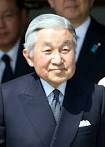
Akihito |
birth Akihito Akihito, ichthyologist and Emperor of Japan. |